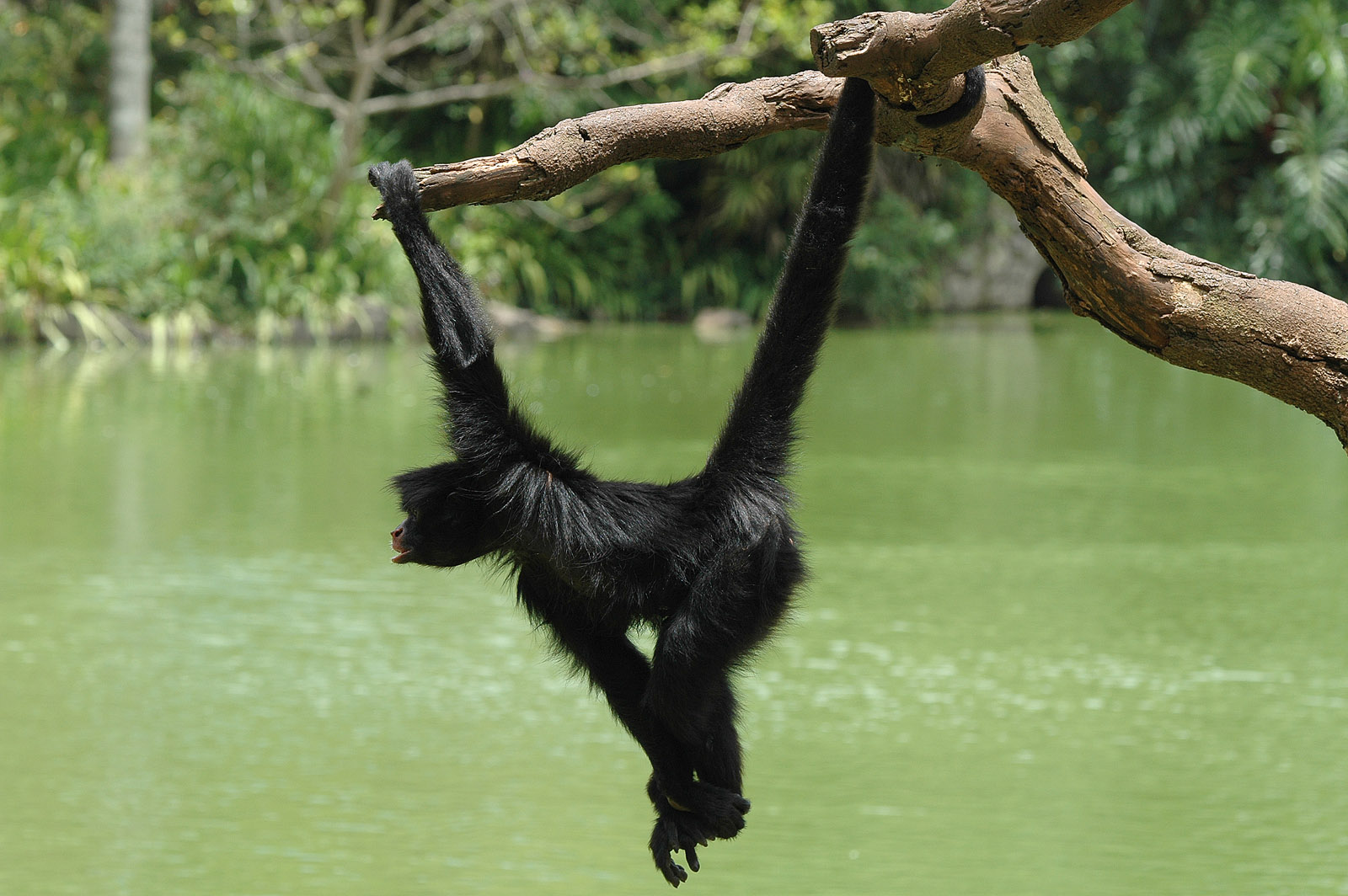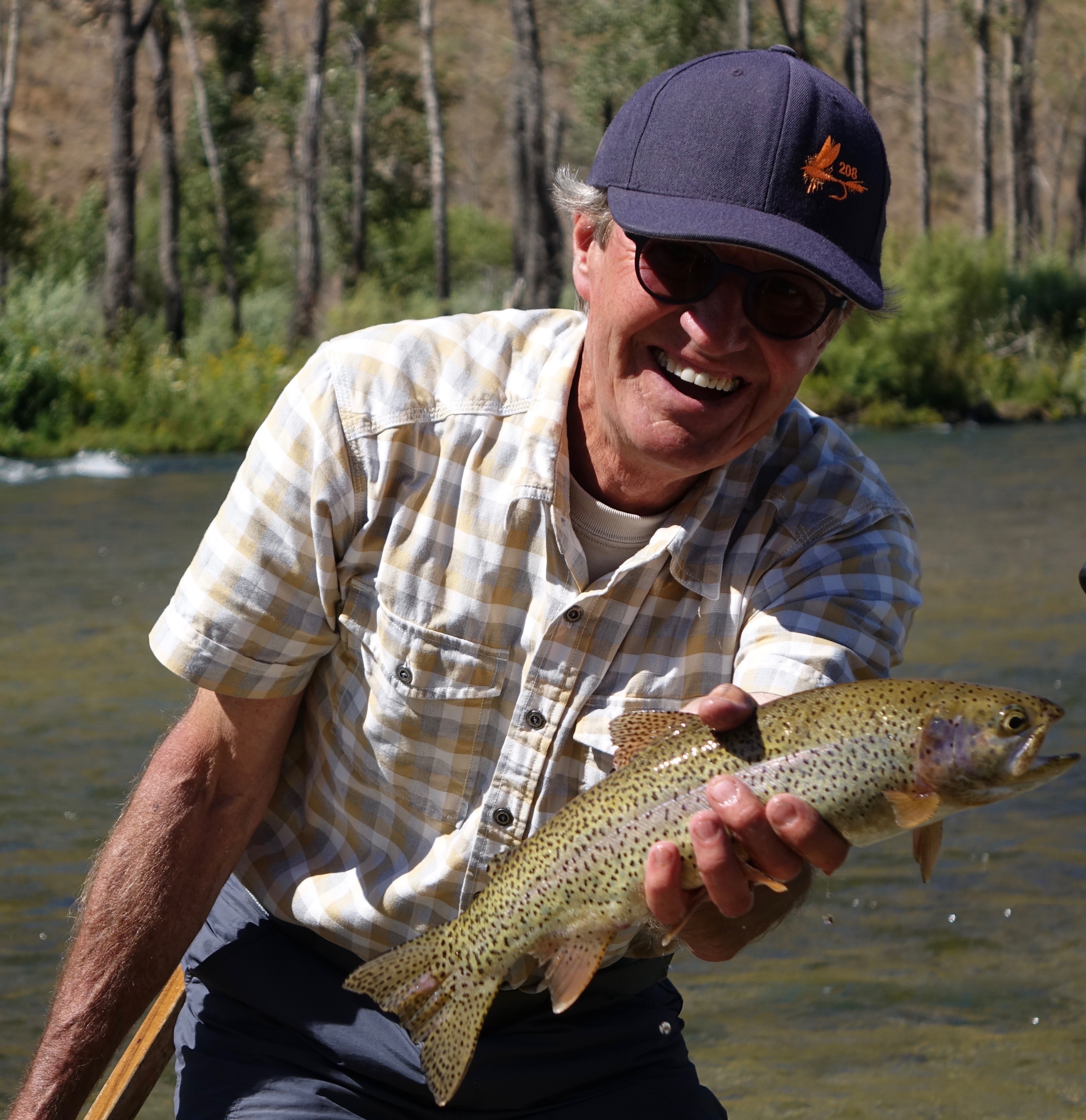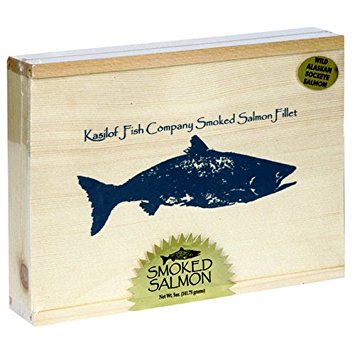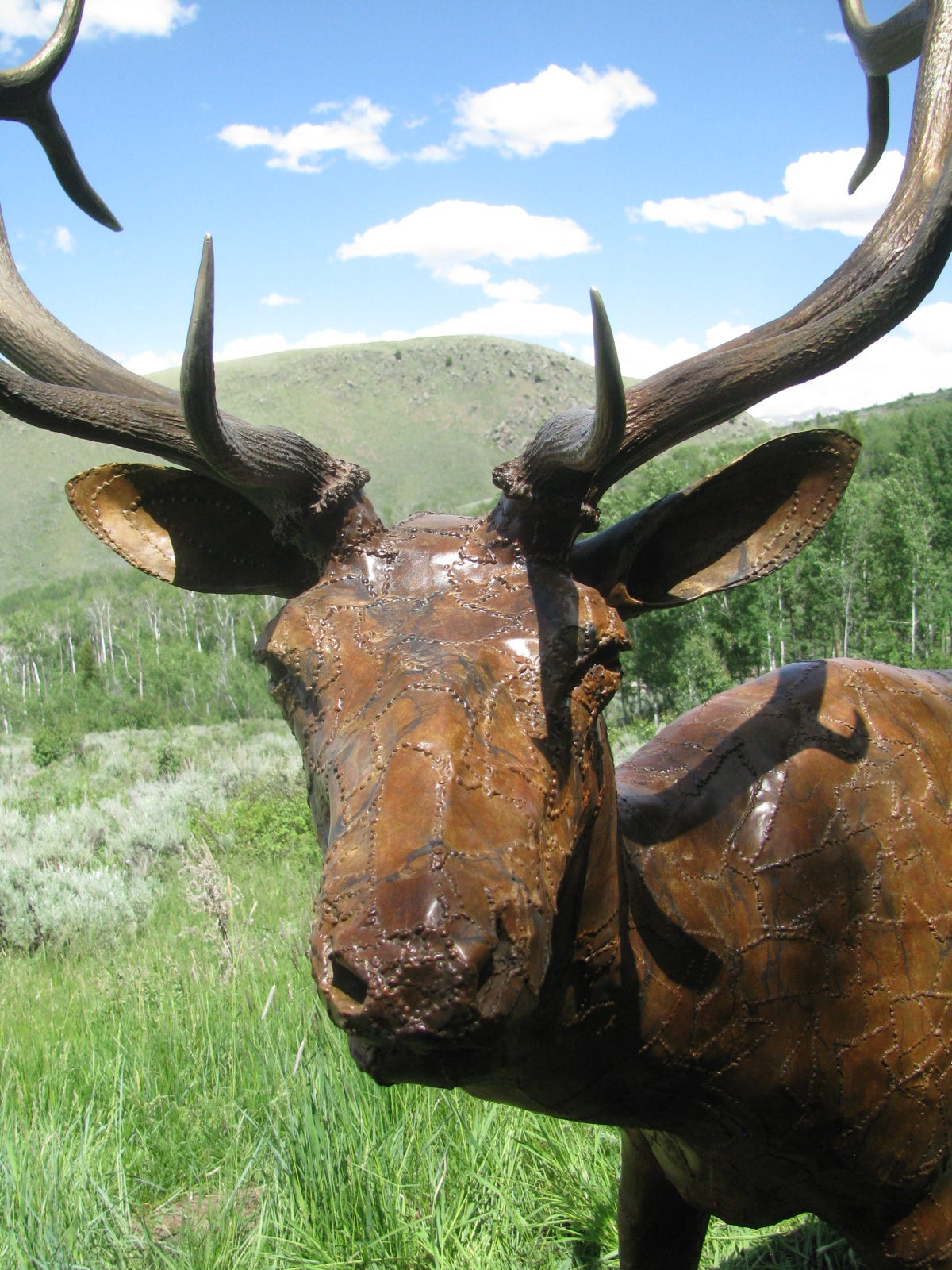Russ Lamb’s early ambitions were cold-forged in the harsh waters of the north Pacific. During the 1970s when most of his contemporaries were easing into office jobs and lives of security and comfort, if not quiet desperation, Russ went to sea in an open skiff, seining salmon from the straits between Puget Sound and Noyes Island. Rather than responding to phones and faxes and beepers, he answered to the brittle and capricious, yet always compelling, harmonics of nature. Russ learned to relish the sting of salt spray and to capitalize upon every nettlesome sensation in the half mad, half joyous pursuit of the mercurial salmon.
Gyotaku
When you handle hundreds, on some days thousands, of fish during the thick of the salmon season, you grow to either love them or hate them. Russ clearly and abidingly grew to love his quarry, harkening back to the views of the ancient Ainu who poetically referred to salmon as the “present from heaven”. As one of the first western practitioners of Gyotaku — the classical Japanese art of lifting ink impressions directly from fish-Russ delved into producing visual testimonials to his catch. But his passion went farther than simple ink blots on paper; it wasn’t long before Russ began to embellish his fish prints, adding color and texture, and incorporating socio-cultural graffiti. Russ Lamb’s wild, in every sense of the word, salmon documents soon swam into the public’s consciousness and developed a following among galleries, collectors and, of course, fish industry insiders, particularly upscale seafood restaurants in Seattle such as Ray’s Boathouse, Arnie’s, Coho’s and Pacific Fresh Seafood in California.

Kasilof
In the mid-1980s it dawned on Russ that as a successful fisherman and artist he was uniquely positioned to do it all: to not only catch and process the fish but to package and present salmon in a way that had never been done before, in a way that conveyed the iconic potency of Pacific salmon. Drawing upon his schooling in commercial art, plus a background in marketing and operations, Russ introduced the distinctly packaged Kasilof Smoked Salmon and quickly made his mark in the field of specialty foods. The award winning Kasilof brand made its way up Mt. Everest in the backpacks of the US climbing team, and into the pages of the Orvis Company and Cabela’s catalogues.
When piloting a skiff on the open ocean one must deal with rip tides, treacherous currents and grievous weather. But such foibles of nature are a picnic compared to the turmoil and ruthlessness of the business environment. The harder Russ worked to compete and excel in the specialty foods industry, the more disquieting and disheartening it all became. He had success and-for the first time in the artist’s all-too-typical hardscrabble existence-he had money. But something was missing.
Reset
In 1997 Russ embarked on a brief sabbatical to the Amazon River to fly fish for peacock bass with Bob Koenke, editor of Wildlife Art News. During tranquil periods on the river, Russ contemplated the path of his trajectory and what direction to fire the next booster rocket in this phase of his life. Amid the screech of monkeys and the buzz of tropical locusts, he conferred with Koenke who listened patiently, then bluntly observed: “Kid, you’re a wildlife artist and you better start to realize it. So get your buffalo lined out and use the talents you were given.”
Russ Lamb went back to the drawing board. Literally. And as his images became more and more expansive so did his arsenal of media and materials. When daubs of Grumbacher’s weren’t enough to get the job done he went to gallon cans of Sherwin-Williams. When inked salmon failed to leap far enough off the paper, Russ went to wood and metal, to clay and mortar, anything he could get his hands on, with which to build multi-dimensional pieces that hummed with energy, installations that didn’t merely occupy space but commandeered it.
While experimenting with a broad and sometimes odd array of media, Russ developed an affair with acetylene, falling under the spell of its intense heat and magic…the wicked blue stiletto of flame. He became a master welder and fabricator, turning slabs of steel into suspended schools of cavorting salmon, and into ten-foot tall elk dreamers, and into soaring gateway Chaparrals.

One-of-a-Kind
Make no mistake, Russ Lamb’s work is not the sweet and cloying stuff that issues from the representational school of Western art. You’ll find little of the warm and fuzzy to cling to in Lamb’s imagery. As an ardent outdoorsman and conservationist, Russ understands that nature is beautiful but indifferent, that nature is chaos, that nature is life and death itself. When hunting game there comes that crucial moment when the arrow is knocked, when the hammer is cocked, when the fly rod is swept back into the initial arc of the backcast. Intent gives way to action; the conscious part of the brain surrenders to the purely reptilian. Between the thought-the plan to deliver the kill shot or the unerring cast-and its actual execution, there falls a shadow. It’s that incomprehensible shadow which inhabits and informs each and every piece Russ Lamb creates.
Because they are at once mystical [even spiritual, if you will] and accessible-indeed, gritty, often humorous, and in your face-there’s an unflagging demand for Russ Lamb’s one-of-a-kind renderings and sculptures. Increasing recognition keeps Russ busy with private installations and commission pieces, in fact, considerably busier than a devoted hunter/angler/outdoorsman ever cares to be. Russ, however, has a method for keeping things in perspective: “When I start to feel like a slave to my work because of demand, I raise my prices. Perhaps that’s madness…But emotionally and artistically it’s about remaining true to who I am and where I find my inspiration…A studio can become a self-imposed cage if you’re not careful, and you know what happens to wild animals when caged.”
Exploration
Periodically, and sometimes completely spontaneously, Russ Lamb takes off into the wild blue yonder. He goes bow hunting for elk in the Rockies, or fly fishing for bonefish in the islands, or simply saddles up his Harley and scorches some asphalt, the direction hardly matters. But he never comes back empty handed. Russ invariably returns with a knapsack of found objects-river rocks, gnarly wood, rusted iron, shed antlers, skulls, bones and God knows what else-and the spiritual forces these things contain. All components, inspirational nuts and bolts, the ribs and artifice of future projects. From nature’s glorious and morbid detritus Russ Lamb gives shape to the visions and entities found lurking in the landscape of his mind.




